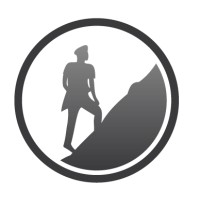Editor’s Note: This article is a research contribution from Giana Romo Bastidas, Research Fellow and Intern at Rise to Peace. It explores the shifting landscape of modern conflict, contrasting conventional and liminal (hybrid) warfare, and examines their divergent impacts on human security. The piece is academic in scope and includes references for further reading. We at Rise to Peace encourage readers to consider how these evolving forms of warfare complicate the boundaries of conflict and security in the 21st century.
Executive Summary
The nature of war in the 21st century is shifting from conventional, state-on-state conflict to ambiguous, hybrid, and liminal forms of confrontation. Liminal warfare, operating in the “gray zone” between peace and war, leverages non-military tactics (cyberattacks, disinformation, economic coercion) to undermine security in ways that are often invisible and difficult to attribute. While conventional warfare’s impact on human security is overt, kinetic, and triggers organized humanitarian responses, liminal warfare erodes economic stability, societal cohesion, and political integrity, often below the threshold of traditional response mechanisms. Humanitarian and legal frameworks designed for conventional conflict struggle to address the chronic insecurity and ambiguity produced by liminal warfare. The article calls for new, adaptive, human-centric frameworks to address the complexities and persistent threats posed by this evolving landscape of conflict.
Liminal Warfare and Human Security: Rethinking the Impact of Modern Conflict
The character of conflict in the 21st century has undergone significant changes, moving from the traditional model of state-on-state warfare toward more fragmented, ambiguous, and non-linear forms or confrontation. While war has always changed its form and appearances, recent discussions highlight the hybridization of warfare (Mälksoo,2018), which involves the increasing interconnection of military, information, and cyber means of confrontation (Eberle & Daniel, 2023). This shift includes concepts like asymmetric warfare, counterinsurgency, and cyber warfare, and involves the strategic use of non-violent means. This transformation has profoundly blurred the lines between war and non-war. Traditionally, conventional warfare understands security in terms of individual states, focusing on the protection of the state’s sovereignty and territorial integrity from external military threats. It is defined by the military capabilities used against invading armies and involves combat operations carried out by organized armed forces, often through physical violence and destruction. The general impact of conventional warfare on human security, while focused on state survival, historically included devastating civilian suffering and loss life, as seen in the catastrophic scope of conflicts like world war I and II.
In contrast, liminal warfare, often discussed alongside or as part of hybrid warfare, refers to conflict that occurs “in-between” space or zone of uncertainty between established states of war and peace. The concept of liminality, originating in anthropology, describes an “interstructural position” of being stuck “betwixt and between” recognized structures and categories, characterized by uncertainty and ambiguity (Mälksoo, 2018). In the context of conflict, this means it is difficult to clearly establish if one is in a state of war or peace. A contemporary example of this change is the Russian annexation of Crimea in 2014, which involved the use of “little polite green men” alongside information and cyber means. Illustrating the increasing hybrization of warfare (Eberle & Daniel, 2023). This event, along with Russia’s ongoing military involvement in Ukraine, illuminates this shift. Hybrid warfare, particularly as a discourse, operates by extending the logic of war into wider areas, such as, social life, blurring the distinction between peacetime and conflict. It can often be described as undeclared, insidious and even invisible, happening here and now without clear delimitations or battlefields.
This essay argues that while conventional warfare primarily impacts human security overtly through state-centric kinetic violence, leading to direct physical harm and large-scale destruction, liminal or hybrid warfare operates differently. Characterized by its inherent ambiguity and use of non-military means in the in between space of war and peace, it insidiously targets broader dimensions of human security, including economic stability, societal cohesion, and political integrity.
Human security is a concept that gained significant traction in the post-Cold War era, fundamentally reorients the focus of security studies from the state to the individual. Traditional security paradigms tend to center the state, while human security seeks to protect ‘the vital core of all human lives in ways that enhance human freedoms and human fulfillment’ (Liotta & Owen, 2006). It advocates for the protection of people from a broad spectrum of threats, encompassing not only “freedom from fear” but also “freedom from want” (Acharya et al, 2006). This expansive understanding recognizes that security extends beyond traditional military concepts to include economic, food, health, environmental, personal, community and political dimensions. Conventional warfare, in stark contrast, traditionally understands security in terms of individual states, primarily focusing on the protection of the state’s sovereignty and territorial integrity form external military threats. It is defined by military capabilities used against invading armies and involves combat operations carried out by organized armed forces, characterized by physical violence and direct destruction (Sari, 2023). The primary impact of conventional warfare on human security, while often framed around state survival, historically entails devastating civilian suffering and loss of life, as evidenced by the catastrophic scope of conflicts like World war I and II (Sari, 2023). The overt and violent nature of such conflicts often leads to severe physical harm, mass displacement, and the extensive destruction of vital infrastructure. This creates “security vulnerabilities and challenges in the context of forced migration” and triggers large-scale humanitarian crises, though these are typically understood in conventional terms (Rowa, 2023).
Liminal warfare, often discussed interchangeably with “hybrid warfare” or “gray zone conflict” fundamentally operates in a space that is “in-between the traditional duality of war and peace” (Eberle & Daniel, 2023). This concept draws heavily from the anthropological notion of “liminality”, originally articulated by French ethnographer and folklorist Arnold van Gennep and further developed by cultural anthropologist Victor Turner. Liminality refers to an “interstructural position” (Mälksoo, 2018) of being “betwixt and between” established structures and categories, characterized by inherent “uncertainty and ambiguity”. Liminal entities are ambiguous they elude or slip through the classifications that normally locate states and positions in cultural space (Mälksoo, 2018).
Scholars like Maria Mälksoo have adapted this concept to international relations, employing it to analyze “the politics of the transitional” and highlights its “theoretical and empirical mileage “in understanding large-scale shifts in global affairs. Similarly, Hazel Andrews and Les Roberts demonstrate liminality’s application to geographical spaces, underscoring its manifestation in various spatial and experiential domains. In the context of conflict, this ambiguity is a critical aspect, making it difficult to clearly establish if one is in state of war or peace (Eberle & Daniel, 2023), and hostile actors deliberately generate ambiguity to obscure what is happening and mask the differentiation between war and peace. The defining features of liminal warfare include its inherent ambiguity and uncertainty, a lack of formal declarations, and an extensive reliance on non-military tactics, particularly in the information sphere. This form of conflict blurs the lines between state of war and non-war (Eberle & Daniel, 2023), operating below the threshold of conventional war while pursuing strategic objectives. Core tactics often associated with this liminal space encompass cyberattacks, disinformation and propaganda, economic coercion, and political subversion, all contributing to a conflict environment that is undeclared without clear battlefields (Eberle & Daniel, 2023).
The impact of warfare on human security diverges significantly when comparing conventional and liminal approaches, particularly concerning physical and economic security. In conventional warfare, physical security is directly and overtly threatened. It involves primarily through direct violence, combat, deaths, physical injuries, and the destruction of infrastructure (Sari, 2023). Its immediate physicality, though devastating, often prompts organized humanitarian responses. In contrast, liminal warfare causes physical insecurity through indirect and systemic means. Cyberattacks on hospitals, power grids or transportation systems can disrupt essential services, delay medical treatment, and indirectly cause fatalities (Eberle & Daniel, 2023). Moreover, coordinated disinformation campaigns can incite social unrest and violence, contributing to civilian insecurity without clear perpetrators.
Economically, conventional wars destroy physical capital, disrupt production chains, and cause inflation and unemployment in conflict zones. Liminal warfare, however, strategically undermines economic security without kinetic force. It employs tools such as sanctions evasion, intellectual property theft, and currency manipulation to erode the economic stability of target states (Eberle & Daniel, 2023). These tactics, often difficult to attribute, result in prolonged poverty, stagnation and public distrust in financial institutions. The threatening nature of such aggression means populations may experience economic collapse without ever recognizing the mechanisms of warfare acting upon them.
In some contexts, conventional warfare may paradoxically strengthen social cohesion as communities rally against a visible external enemy. However, liminal warfare deliberately targets the internal bonds that maintain societal unity. By leveraging propaganda, deepfake technology, and algorithm-driven misinformation, it sows distrust between citizens and their governments, polarizes electorates, and exacerbates social fragmentation (Pendaroski, 2015). The outcome is a state of chronic insecurity where fear is not caused by bombs but by the erosion of shared truths and mutual trust. Similarly, political stability suffers differently. While conventional wars may involve direct regime change or military coups, liminal tactics destabilize political systems more subtly; from within. Interference in electoral processes, the funding of extremist political parties, and the erosion of public confidence in democratic institutions have all become common features of liminal conflict (Eberle & Daniel, 2023). The absence of overt aggression allows these actions to occur below the threshold of international response mechanisms, creating enduring political uncertainty and weakening state governance capacities.
Conventional warfare often generates visible and traceable humanitarian crises, mass displacement, infrastructure collapse, and widespread human suffering. These outcomes typically activate international mechanisms such as the United Nations High Commissioner for Refugees (UNHCR), the international Committee of the Red Cross (ICRC), and formal humanitarian corridors, providing structured responses to protect civilians (Rowa, 2023). Legal instruments such as the Geneva Conventions are designed for such scenarios, enabling clear, accountability and coordination.
Liminal Warfare, by contrast, presents unique challenges to humanitarian systems. The weaponization of migration; whereby displaced populations are used as tools to exert pressure on adversaries. Rowa (2023), highlights how securitization processes embedded within protection regimes often fail to address these ambiguous crises. Refugees caught in liminal conflicts frequently fall outside conventional frameworks of protection, facing prolonged uncertainty and neglect. States may intentionally facilitate refugee flows to destabilize neighboring countries or overwhelm asylum systems, intensifying vulnerabilities. Moreover, attribution in liminal warfare is profoundly difficult. Without clear perpetrators or legal thresholds for conflict, holding actors accountable becomes a challenge. This undermines international justice mechanisms and delays or prevents the activation of protective responses. As such, liminal warfare not only destabilizes regions but also exploits and erodes the very systems designed to protect vulnerable populations in times of crisis.
Liminal warfare presents a fundamentally distinct threat to human security when compared to conventional warfare. While traditional conflicts inflict immediate and visible harm (mobilizing structured humanitarian and legal responses) liminal warfare operates in the shadows, targeting the economic foundations, societal cohesion, and political integrity of its victims through prolonged ambiguity and non-kinetic strategies. These indirect methods produce chronic insecurity, erode public trust, and complicated international response mechanisms. As this essay has shown, the multifaceted and often invisible nature of liminal conflict demands a reevaluation of security paradigms and shift toward more adaptive, human-centric approaches. The pervasive “chronic insecurity” fostered by this form of conflict, a state of perpetual anxiety rather than acute trauma, demands a fundamental re-evaluation of how security is conceptualized and addressed. Ultimately, effectively navigating the complexities of contemporary global insecurity necessitates developing new analytical frameworks and response strategies that account for the pervasive, multi-dimensional, and often invisible threats posed by liminal warfare.
References:
Acharya, A., 2001. Human Security: East versus West. International Journal, 56(3), pp.442–460.
Turner, V., 1969. The Ritual Process: Structure and Anti-Structure. Chicago: Aldine Publishing.
Van Gennep, A., 1909. The Rites of Passage. Paris: Émile Nourry.







